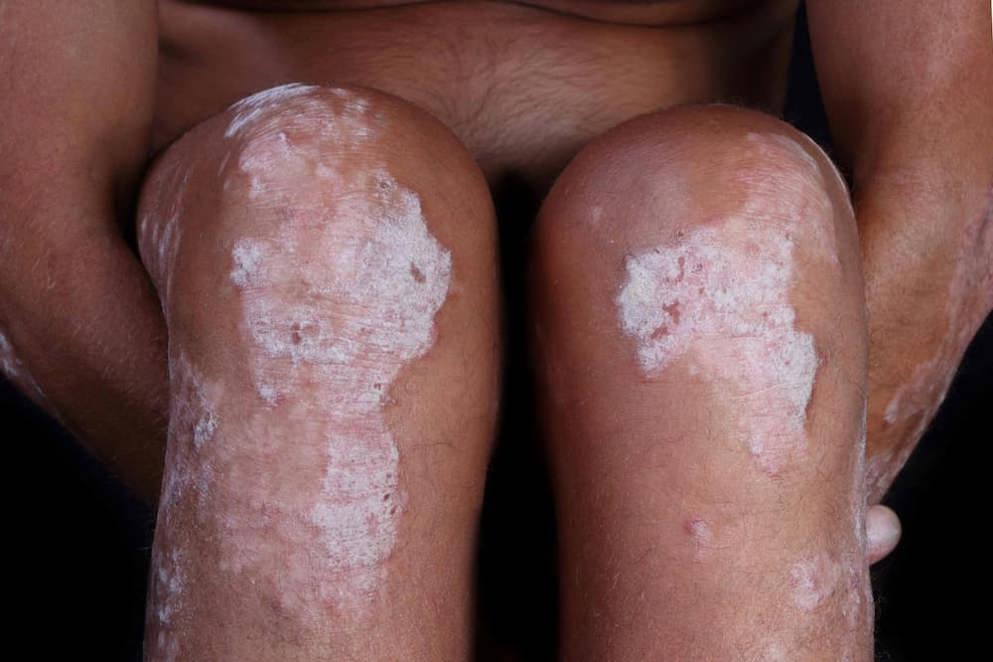New Bimzelx two year data in moderate to severe plaque psoriasis presented at the EADV 2021 Congress.
These data, together with additional findings from the Phase III/IIIb clinical program for bimekizumab in psoriasis, were presented across nine UCB-supported abstracts at the 30th European Academy of Dermatology and Venereology (EADV) Congress. Bimekizumab is the first selective IL-17A and IL-17F inhibitor to be approved in the European Union for the treatment of moderate to severe plaque psoriasis in adults who are candidates for systemic therapy.
Interim data from the BE BRIGHT study presented at EADV showed that patients treated with bimekizumab achieved sustained levels of skin clearance (PASI 90 and PASI 100) through to two years with continuous maintenance dosing, and that bimekizumab was generally well tolerated, with no new safety signals identified. Switching to bimekizumab following 24 weeks of adalimumab treatment (BE SURE) resulted in a sustained increase in PASI 90 and PASI 100 responder rates up to two years. In addition, switching to bimekizumab following 52 weeks of ustekinumab treatment (BE VIVID) resulted in a sustained increase in PASI 100 responder rates up to week 100.Patients switching to bimekizumab after an inadequate response to ustekinumab at week 52 also showed sustained improvements in levels of skin clearance (PASI 90 and PASI 100).
“In clinical practice, patients with moderate to severe plaque psoriasis may need to transition between biologics to optimally control their disease. Longer-term results from the BE SURE study and the BE BRIGHT open-label extension study shared at EADV 2021 demonstrated that switching from adalimumab to bimekizumab helped more patients with moderate to severe psoriasis to achieve and maintain completely clear skin, as measured by PASI 100, through two years of treatment,” said Professor Diamant Thaçi, Institute and Comprehensive Center for Inflammation Medicine, University Hospital of Lübeck, Lübeck, Germany.
Longer-term results from BE SURE and BE BRIGHT open-label extension trial: After completing the phase III BE SURE trial, patients could enrol in the OLE study. In bimekizumab-randomized patients (320 mg every four weeks [Q4W] through two years), PASI 90 response rates were 91.2 percent at both weeks 16 and 104. PASI 100 response rates in this group were 61.6 percent at week 16 and 72.3 percent at week 104. In bimekizumab-randomized patients (320 mg Q4W for 16 weeks, and then every eight weeks [Q8W] through two years), the percentage of patients reaching PASI 90 was 89.4 percent at week 16 and 89.7 percent at week 104. Levels of PASI 100 response in this group were 62.8 percent at week 16 and 68.1 percent at week 104.
Switching from adalimumab to bimekizumab 320 mg Q4W resulted in sustained response rates (PASI 90 and PASI 100) through to two years (week 104), which were comparable to the response rates seen in patients receiving continuous bimekizumab treatment. Bimekizumab was well tolerated over two years, with no new safety signals
.
Bimekizumab data up to two years in patients switching from ustekinumab : This analysis included adult patients from BE VIVID who were initially randomized to ustekinumab 45 mg / 90 mg (by weight) at weeks 0 / four, then every 12 weeks, or bimekizumab 320 mg Q4W through week 52 Based on the PASI 90 response at week 52, patients entering the OLE were re-randomized to bimekizumab 320 mg Q4W or Q8W. At entry to the OLE study, 44.9 percent of ustekinumab-treated patients and 73.6 percent of bimekizumab-treated patients had achieved PASI 100.3 For all patients who switched from ustekinumab to bimekizumab the PASI 100 response increased to 65.4 percent at week 56, 78.7 percent at week 68 and 69.9 percent at week 100, which was comparable to the response rate seen in patients receiving continuous bimekizumab treatment at week 68 (75.4 percent) through week 100 (68.8 percent). For patients who switched to bimekizumab following an inadequate response to ustekinumab at week 52, high levels of response were achieved. At week 56, after one dose of bimekizumab, 77.3 percent of these patients achieved PASI 90 and 40.9 percent achieved PASI 100. These responses were sustained and further improved at week 100, with 84.1 percent and 54.5 percent of patients achieving PASI 90 and PASI 100, respectively. There were no unexpected safety findings in patients who switched from ustekinumab to bimekizumab during the OLE.
Pooled safety data from up to two years of treatment in Phase II and III clinical trials : Across Phase II and III trials, the total bimekizumab exposure was 3109.7 patient-years (N=1789). Treatment emergent adverse events (TEAEs) occurred at an exposure-adjusted incidence rate (EAIR) of 202.4 per 100 patient-years, serious TEAEs were seen at an EAIR of 5.9 new cases per 100 patient-years and TEAEs leading to discontinuation at 3.8 new cases per 100 patient-years. The most common TEAEs in the Phase II and III trials with bimekizumab were nasopharyngitis (EAIR: 19.1 new cases per 100 patient-years), oral candidiasis (12.6 new cases per 100 patient-years) and upper respiratory tract infection (8.9 new cases per 100 patient-years). The EAIR for oral candidiasis showed a decrease compared with one year of bimekizumab treatment (12.6 new cases per 100 patient-years versus 16.4 new cases per 100 patient-years) and was lower with bimekizumab dosed Q8W (9.6 per 100 patient-years) compared with Q4W (16.4 per 100 patient-years). The majority of cases (98.5 percent of patients experiencing oral candidiasis) were mild or moderate and rarely led to study discontinuation.
The recommended bimekizumab dose for adult patients with plaque psoriasis is 320 mg (given as two subcutaneous injections of 160 mg) at week 0, four, eight, 12, 16 and every eight weeks thereafter. For some patients with a body weight greater than 120 kg who did not achieve complete skin clearance at week 16, 320 mg every four weeks after week 16 may further improve treatment response. In the studies reported at EADV 2021, patients received maintenance dosing of bimekizumab 320 mg Q4W or Q8W.

